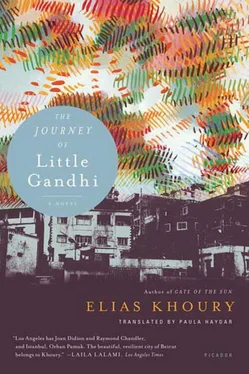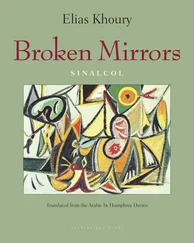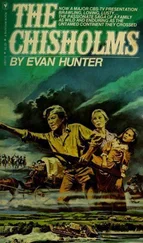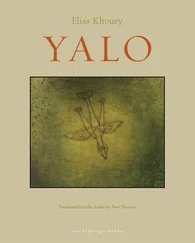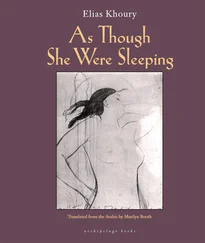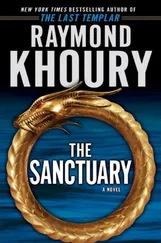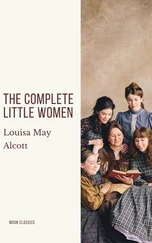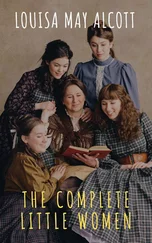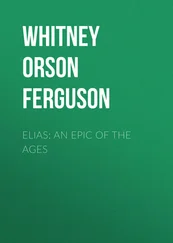Abu Saeed was convinced. Mihran Efendi’s stories were convincing. He remembered him sitting on the chair in their garden, his father welcoming him in Turkish, and the Turk telling stories about the First World War and how the Turks were defeated at the Suez Canal and were scattered in the wilderness, and how he alone escaped, crossing the Sinai Desert and Palestine to Lebanon, where he stayed and died and never married. Mihran Efendi died before the sea animal turned over and killed everyone.
When the animal turned over that morning, and Abu Saeed heard the bullets that ripped Sunbuk apart, he looked out from his balcony and saw Sunbuk kneeling down and Gandhi wrapped in newspapers. It was drizzling as he shouted, “Allahu Akbar!” That day, everyone remembered how the screams in the city rended the skies. That day, the blessed one was walking beside her mother, and both of them seemed like strangers in this world. They walked along and didn’t stop to look at Little Gandhi’s corpse. The color black covered everything. The city was black, and the boots of the Israeli soldiers were everywhere.
Fawziyya and her crazy daughter walked to Mashta Hasan, that’s what Alice said. Alice said she thought the two women went there. As for Husn, no one saw him. Alice searched for him a long time, but he disappeared. Master Ahmad, the hair salon owner, told Alice he hadn’t seen him since that morning. He said he used to sleep in the salon every night. Master Ahmad said he didn’t go to work that morning, he’d been away for seven days, and when he came back he found the broken glass scattered everywhere, but he didn’t find Husn.
Alice said Husn died, he went to war and died. Didn’t you hear death? she said to me. All the young men went to their deaths. They’d fire the B7 missiles and shout “Allahu Akbar!” and die. That day everyone died. By myself I took him, I took Gandhi to the grave and came back to the hotel. They all died, al-Munla was shot and won’t recover, the Assyrian said he was leaving, and Husn disappeared.
He had small hands, dry, pitch-black fingers. The hands and fingers were covered with interlocking black splotches, like pieces of skin stuck on top of one another. Little Gandhi wasn’t bothered by the colors of his hands, he knew this was part of his trade, and that when he took up the shoe-shine box he’d chosen the world of shoe polish that colors shoes and hands and sidewalks. It was a plain wooden box, with a raised tongue for customers to put their shoes on, special compartments for the shoe polish containers, a shaving brush he used to wash the shoes with soap, a toothbrush for getting the sides of the shoes, two brushes for shining, and a thick black pad. Gandhi didn’t choose this trade, it came to him as if it were waiting for him. After he left the restaurant, buying the box was all he could do. He went to a carpenter in Nabaa who specialized in making coffins and asked him to make him a box. He picked up the box and walked from Nabaa to Hamra Street. He sat in front of Jarjoura’s Restaurant, then later changed to Faysal’s. No one asked him why he was sitting there. The newspaper dealer Naeem Nassar welcomed him as if he’d been waiting for him. Naeem Nassar had been selling newspapers for twenty years, in that very spot. He’d lay out the papers and magazines on the sidewalk, paying close attention to the color scheme, sit down on a small chair in front of his stall, and smoke incessantly. He knew everything that went on, for he’d been selling newspapers since childhood, and so would his son after him. He’d read everything and advise the customers what to buy. Naeem Nassar welcomed Gandhi. At that time his name hadn’t become Gandhi yet, he was Abd al-Karim. Abd al-Karim would sit behind his box as if he were stuck to it. He never lifted his head, even when he got paid for shining the shoes. As though he were an old man, Little Gandhi’s soft beard looked like black splotches on his dark face, and he wore a dark suit summer and winter. He sat like a child or an old man, for this profession is suited only to children and old men. Gandhi didn’t change the rules of the profession, for he was always leaning over the shoes like an old man, and when he carried his box to go back to his room in Nabaa, he ran like a child.
The Reverend Amin was the first to draw his attention to how dirty his hands were and suggested he wash them with kerosene. Gandhi didn’t use kerosene. He let the shoe polish build up on his hands, to the point that when he polished, his hands looked like part of the shoe.
The shoes were endless. Gandhi could tell a man’s personality from his shoes: worn-out shoes were a sign of carelessness, shoes that were always like new were a sign of fearfulness, shoes that weren’t laced properly were a sign of sexual potency, shoes with the backs folded down like slippers were a sign of craziness. He’d go on about this with the American, Dr. John Davis, who was impressed with Gandhi’s ability to polish shoes and sit for long hours bent over his hands without getting tired.
What really preoccupied Gandhi’s mind was mirrors; he wanted to turn each shoe into a mirror. He especially loved black shoes, for brown shoes, no matter how much they shined, never became like mirrors. A black one, on the other hand, could really be polished and became like one solid piece. After the black shoe polish was poured on, it became one, as though it were cast in black, and with the first rub of the brush the shine would start and brighten it, the black color would be opened to the world, and Gandhi would see the parts of his face on the shoe’s upper. The whole world enters shoes, and the man standing there, most often holding a newspaper, reading, doesn’t understand the importance of what is taking place atop his shoes. Only Gandhi knew, he knew that everything, the buildings and the faces, and the underground water pipes, and the sidewalk, everything enters into shoes, transforming them into a new world being born.
Gandhi hated the two-toned shoes that came into style in the late fifties, white on the sides with blotches of brown in the middle. Dying white shoes was bothersome, because he didn’t use the kind of polish that coated the leather; instead he had to use a water-soluble dye he got out of a long bottle, using some cottony material — a square white cloth upon which the white liquid was poured. Gandhi would put it on the shoe as if he were performing surgery. That was only for covering the shoe with the color; dying it was another thing altogether. Dying it would bring back the value of the shoe, not just cover it. White was for covering. Women’s shoes with the sharp pointed toes were impossible, because the pointy tip made it difficult to round out the color, so the shoe would remain only covered with the color, even if it was black. The true work was in the black shoe, when you could actually smell the leather, the “chevreux” style, or the “box” style. Gandhi preferred the box even though the chevreux was softer. The box could truly be transformed into a mirror, and the city transformed into a shoe.
When Gandhi would finish with the shoes that were sent to him, he’d stand them up against the wall and use them to watch the reflection of people’s feet as they walked by. When the customer would come to get his shoes, Gandhi would ask him to look carefully and see his face in them.
Once the Reverend Amin got upset. That was at the beginning of their long relationship. Gandhi asked him to look at the reflection of his face in his shoes, so the Reverend thought this short shoe shiner was making fun of him. He gave him a belittling look and left without paying.
He told Gandhi the next day he forgot to pay because he was so upset with him.
Gandhi refused to take any money and said he’d forget about the whole thing, that he wanted to prove to the Reverend that everything could be turned into a mirror. From that day on the Reverend Amin became Gandhi’s friend, and was convinced that everything could be turned into a mirror.
Читать дальше
